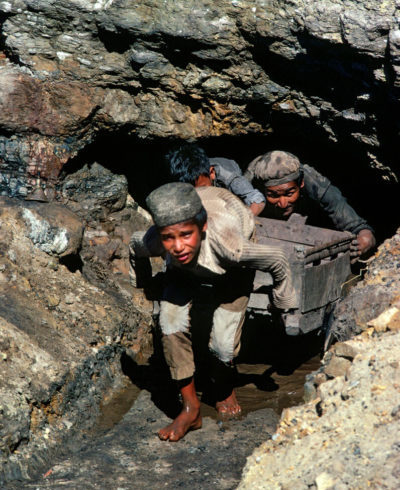Alhassane Faty
Cheikh Anta Diop University of Dakar (UCAD) – SENEGAL
Introduction
Maintaining and strengthening quality education is essential to combat humanitarian crises. Education is not given enough priority by humanitarian nterventions and emergencies (wars, epidemics, natural disasters…). Emergency education must be a pillar of humanitarian aid.
Yet beyond learning, education supports some of the overarching goals of humanitarian aid such as protection, support, social services and familiarity.
Thus, Inter Agency Emergency Network that is gathering non-governmental organizations, governments and United Nations’ agencies work together to ensure the right to education in emergencies and in the early stages of construction, food, housing, health etc. However, it is recognized that humanitarian aid should consider the overall well-being of human beings.
On september 02, 1990, twenty states marked the vigor of the International onvention on the Rights of the child, adopted on July 11 by the Organization of the African Unity which became the African Union (the African Charts of Rights and Welfare). However, it remains to apply it, to transform words into actions, to make words a reality.
Safe Schools Declaration’s Commitments has limits, since „one in 10 lives in a country or zone affected by armed confl ict are children, and one in four of these children do not go to school“ (unicef.fr), and temporary learning schools are to be welcomed and encouraged given that education allows a return to normality and instills hope in the future.
Chapter I : Recognition
of Children’s Rights
One can postulate, following several studies and research, that for a sustained development of the African countries in particular. It is more „profi table“ to invest in the education, the literacy, the training of the women, who, as housewives.
Thus better contribute to the socio-cultural development of their descendants and from a double observation (although constituting more than 50% of the senegalese population.
Women are only literate 19% when only 40.7% of girls go to elementary school and 10% go to secondary), the existence of glaring disparities in the under-education of girls according to the regions of the country.
The study deciphers the most determining factors of the phenomenon and analyzes the mechanisms that risk perpetuating this handicap. The hypothesis adopted is that the under-education of girls in Senegal results, to a large extent, from a „predisposition“, from an anequal logic between men and women, which is still very signifi cant in rural areas in particular and that the current crisis of the school strengthens notably.
In other words, strategies adopted to deal wih the poor performance of the school system end up having negative effects on increasing the enrollment rate for women.
Chapter III : Temporary Learning
species
During the Ebola crisis in Sierra Leone, the Ministry of Education was able to continue teaching during radio program while the schools were closed for almost a year. In Afghanistan, the state has recognized that commuting to school is often dangerous in times of crises and has therefore established community schools.
Nevertheless, the organization of the space must allow flexibility of use during these different periods and these different times. The space must respond to the evolution of the use of premises, over time. Based on the words of Helena Murseli who believes that : „the process of setting up temporary learning spaces consist first of all identifying the places, in or near displacememt camps, then proceeding to the opening of these spaces, conditioned on the supply of materials.“ (unicef.org)
An environment which is a support for learning and production, in which pedagogy centred on the learner is set up, must, in its very conception, reflect and value the diversity of origins and cultures, promote respect and facilitate the link between teachers and students.
The comfort of the environment remains an important criterion in the design of buildings: species must provide comfort, good air quality and good lighting. In some countries, especially those affected by natural disasters such as earthquakes, schools are seen as a natural refuge for the local community.
Bibliography
UNICEF FOR EVERY CHILD. ‘‘Education Under Attack’’. https://www.unicef.org/education-underattack ‘‘Students are trashing Hunger, not Food’’. September 2017. www.foodtank..com
DEWEY, Caitlin. April 2018. ‘‘The Hidden Crisis on College Campuses : Many students Don’t Have enough to Eat’’. www.washingtonpost.com. Schools & Health. April-2020. ‘‘Malaria’’. www.schoolsandhealth.org
SUBSAHARIAN-AFRICA VOLUME 2. . September 2016. ‘‘Education in Emergencies and Protracted Crises in Sub-Saharian Africa’’. www.onusenegal.org
MURSELI, Helena. 2019. « L’éducation en situation de confl it en République Centre Africaine. »https://journals.openedition.org/cres/4009
NGONGO, Kazembe. 2014. « La protection des enfantspendant les conflits armés, cas de l’est de la
RDC, de 1996 à 2015 » par Constantin Université de Kinshasa – Graduat
SULLY, Lefabson. 2005. Protection « Plaidoyer pour la protection des droits de l’enfant en Haïti ».www. memoireonline.com article/ «des-ecoles-pas-des-champs-de-bataillela-
france-doit-signer-la-declaration-de-securite »-https://www.unicef.fr/











